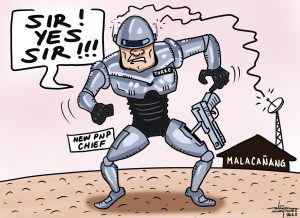The Davao Historical Society (DHS) and the Filipino-Chinese Heritage and Cultural Society, Inc. (FCHCSI) have joined forces to work on the declaration of the Davao Chong Hua High School as a heritage site in time for the school’s 100th year founding anniversary celebration on September 28, 2024.
FCHSCI President Edgar Te, an alumnus of the century-old school, shared how its original name of Davao Chinese High School became Davao Central High School in 1976 and then renamed Davao Chong Hua High School in 2016.
“It was changed to Chong Hua, a Chinese term that translates to Central China, or in the school’s context, it refers to culture and heritage associated with China, because the Davao Central name got mixed up with the other elementary school with the same name,” Mr. Te explained.
I remember during my time at Davao City High School, our school would often be interchanged with Davao Central High School because we had the same initials – DCHS.
In her book, “Abaca Frontier,” Professor Patricia Irene Dacudao wrote about how the Chinese school was established about the same time as the Japanese built their first schools in Davao.
“The Chinese community built a high school in June 1924 with the expressed aim of preserving Chinese language and culture among the overseas Chinese,” Dacudao noted.
Based on her research, Davao then had the least number of Chinese people among similarly situated populated provinces in the Philippines. According to the 1903 census, there were only 19 Chinese identified, a mere 0.05 percent of the total Chinese population in the Philippines.
In the succeeding years, however, there was a rapid rate of increase that overtook other provinces in the country. From the initial 19 in 1903, the Chinese population in Davao grew to 3,595 on the eve of World War II.
Even though the Chinese population paled in comparison to the Japanese population of 17,888, “the increasing number of Chinese children warranted the establishment of the Davao Chinese High School, which had 30 enrollees in its first year.”
The first Chinese school, according to Dacudao, was run by the Davao Central Educational Association, similar to the Philippine Chinese Educational Association in Manila.
The school was supported by quarterly contributions from Association members and was locally called the Central School.
“Indicative of the cordial communal relations among the multinational peoples of Davao, the school received land donated by a Hispanized Chinese, who was a former pearl merchant-turned-abaca planter in October 1924, the very same month that anti-Chinese riots were taking place in Manila,” wrote Dacudao.
That Hispanized Chinese was Don Francisco Villa-Abrille (Lim Juna), a charter board member of the school, who came to Davao in 1878 from Fujian in Southern China via Jolo, Sulu.
She noted that in Davao at that time, “Chinese students transferred to their new one-story wooden building the following January without incident and began their studies under a Filipino-Chinese curriculum.”
This historical account of how Davao embraced the Chinese — even during the American colonial period when the United States law called the “Chinese Exclusion Act” was enforced in the Philippines — showed just how different Davaoeños are from other Filipinos, especially those from the national capital. Davaoeños have always been more open, more inclusive and more cooperative with other nationalities.
In Rogelio “Noning” Lizada’s book, “Sang-awun sa Dabaw,” he shared many stories of “adventures in the high seas of Chinese illegal entries who made it to Davao.” Most of these Chinese first entered the country through Jolo, which has a long relationship with China that dates back even before the Europeans came to this part of the world.
“Coming to the Philippines entailed a big risk. As illegal entrants, they had to avoid American patrol vessels and pirates in the high seas…when a Chinese vessel saw an approaching patrol boat, their ship changed course and threw illegal entrants to the sea. They were just hauled later when the coast was clear,” shared Lizada.
Many of the descendants of those “illegal entrants” are now prominent leaders of the Davao community and though they still honor their Chinese heritage, they now consider themselves Davaoeños.
In fact, Davao Chong Hua High School has produced a National Artist for Visual Arts, Ang Kiukok. He was born in Davao City in 1931. Another prominent graduate of the school is Jollibee founder Tony Tan Caktiong, born in Davao in 1953. That is why some Davaoeños would claim that Davao is Jollibee’s hometown.
Davao’s Chinese community has grown through the years and the four archways bordering Davao City Chinatown represent our shared values — unity, friendship, peace, and prosperity.
I recall my interview with Miss Chinatown Philippines 2018 Joy Wu, the first Davaoeña to represent the country in the Miss Chinese International pageant, when she said the warmth and welcoming spirit of Davaoeños spring from our conscious celebration of diversity.
“When I was a kid, I always looked forward to the city-sponsored celebrations of our different cultures, including Chinese culture. We are always included so we feel like we belong here with the other communities,” Joy shared.
“People who come here always feel comfortable because Davaoeños are truly respectful of different cultures and backgrounds. Davao is truly a place of peace and harmony,” she added.
And that is why part of celebrating 100 years of Davao’s first Chinese school, we are bringing back the Davao City Mooncake Festival on September 16 (the eve of the actual holiday) at the Atrium of Gaisano Mall in Davao Chinatown.
Also known as Mid-Autumn Festival, the Mooncake Festival is a harvest festival celebrated in Chinese culture. Just like our recently concluded Kadayawan Festival, it is a thanksgiving celebration of bountiful harvest as one community living in harmony.


